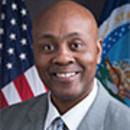After Congress passed the Telework Enhancement Act of 2010, the U.S. Department of Agriculture under Secretary Tom Vilsack became a telework pioneer, offering employees as many as four work-from-home days a week. After the Obama appointee stepped down for a new administration after eight years, however, USDA telework practices changed: The agency sharply limited the amount of time employees could work away from the office.
But when the COVID-19 pandemic began — and after Vilsack returned in 2021 for a second round as USDA secretary — telework became the norm once more. Vilsack was even sworn in from his home in Iowa. As the agency begins to bring people back to the office, USDA CIO Gary Washington tells FedTech how telework has worked for the agency — both before and after the pandemic.
FEDTECH: What inspired USDA to expand telework in the first place?
Washington: During President Obama’s administration, USDA established a telework policy in which employees could telework up to four days a week. Flexible workplace policies help to attract and retain employees who are more productive and engaged. They’re happier because they can balance work and family life. And it’s good for business, for our economy and for the future.
FEDTECH: What technology did you need to implement?
Washington: The two platforms we invested in were improved network capabilities such as VPN and the use of collaboration software, so we could continue to communicate with each other while meeting our mission. While both of these capabilities were in place, when the pandemic started, we found out quickly that due to the large number of personnel now working remotely, we needed to broaden the department-wide use of collaboration software as well as make upgrades to the VPN.
FEDTECH: What issues did you encounter at first?
Washington: We have certainly relied upon the use of laptops longer than expected, but we’ve been fortunate to have quality devices. While many USDA personnel were ready to telework, there was still a large increase in laptop distributions to meet the need and enable all personnel to work. Many individuals’ bandwidth was our second challenge, but our staff and our vendors responded very quickly and made the necessary adjustments to accommodate our needs.
Click the banner below to get access to exclusive emerging tech content by becoming an Insider.
FEDTECH: How quickly did the practice expand?
Washington: One of the most important adoptions for USDA employees was the use of collaboration platforms like Microsoft Teams and Zoom, and our ability to make those platforms available outside of office space. As USDA IT staff enabled these tools and made it easier to utilize them, employees were able to be more flexible while remaining effective. As training events like virtual brown bag sessions and videos became more available, more people began to use them. Once our employees had enjoyable and productive experiences using these new platforms, their adoption took off.
FEDTECH: How did the technology evolve through 2016?
Washington: The most critical difference was our ability to introduce office automation software like Office 365 that works through a portal, making access to critical applications easier. We’ve also made strides in using virtual desktop technology. With our mobile device management platform, allowing documentation editing and collaboration session attendance on our phones, we’ve been able to provide more ways for our staff to be productive than ever before. Most important, we’ve made these improvements while remaining as secure as possible, so we can take advantage of these technical advancements without being taken advantage of through cyberthreats.
EXPLORE: How federal agencies can benefit from emerging cloud trends.
FEDTECH: Telework had a different context during Secretary Vilsack’s first stint in office. What are the differences between then and now?
Washington: In 2014, USDA set up the foundation for a successful telework program. More recently, we had two challenges. We instituted a maximum telework posture due to the ongoing COVID-19 pandemic and we also repealed the 2018 telework policy, which had significant negative impacts on employee morale and retention and hampered our ability to recruit top talent. Looking beyond the pandemic, we are looking at workplace flexibilities across the board, including increased telework options, expanded use of virtual and remote duty stations, and enhanced work schedule flexibilities.
In support of the ability to function, USDA employees have adapted to the use of new tools and new ways to communicate, collaborate and connect just as if they were in an office setting.
FEDTECH: What sorts of workers can telework now who could not before the pandemic? What technology made it possible?
Washington: The combination of network availability and the new office and web tools mentioned previously create many new options for staff members who previously needed to be in an office to complete work. Our ability to digitally sign documents has made it easier for staff to work outside the office, as has our movement of mission-essential applications into the cloud. Our web presence is also much more effective than it was previously, allowing our customers the ability to work with us outside the office as well. With new web tools and electronic signatures, a larger population of USDA was able to work from home.
FEDTECH: How did you support the Secretary’s need for telework?
Washington: USDA IT support staff located in Iowa were able to provide the USDA secretary with the devices needed while he was there and ensured he could connect with staff in Washington effectively. Since then, he has dedicated IT support personnel that help him when he needs it wherever he happens to be — and in many cases, support him and his staff remotely as well.
FEDTECH: What tech is available now that wasn’t then, and what works better now than it did then?
Washington: The availability of cloud-based systems has exploded over the past several years, and the ability to securely access to those systems from a wider variety of devices and places is the biggest difference for USDA. Being able to lead USDA from anywhere is in large part due to the accessibility of more data from a wider variety of devices. The USDA dashboard initiative through our Chief Data Office has made a tremendous difference in awareness, for example, on a wide variety of important administrative topics. Being able to review that information while on travel is important to the secretary.
RELATED: A look back at 40 years working in government technology.
FEDTECH: USDA is very customer-facing. How have telework and website consolidation worked for customers?
Washington: Services like Farmers.gov and AskUSDA have made working with USDA in a remote fashion even easier than before, and the return-to-the-workplace plans we are executing will have more staff in facilities by Memorial Day. But it’s important to emphasize the combination of technical advancement and customer focus during the pandemic that is allowing us to be tremendously flexible with our workforce without impacting service quality.
FEDTECH: How is the return to the office going? What are the guidelines for telework now?
Washington: As well as we can support a remote workforce now, we are improving services for our employees. We are beginning to implement zero trust for our networks, which will make us more secure. We are improving the way we order and distribute our computers for our employees to minimize downtime. We are also making critical improvements in our data center and our cloud services. These improvements will make USDA employees even more effective and our services even more efficient.












